Related Research Articles

Enrico Fermi was an Italian and later naturalized American physicist, renowned for being the creator of the world's first nuclear reactor, the Chicago Pile-1, and a member of the Manhattan Project. He has been called the "architect of the nuclear age" and the "architect of the atomic bomb". He was one of very few physicists to excel in both theoretical physics and experimental physics. Fermi was awarded the 1938 Nobel Prize in Physics for his work on induced radioactivity by neutron bombardment and for the discovery of transuranium elements. With his colleagues, Fermi filed several patents related to the use of nuclear power, all of which were taken over by the US government. He made significant contributions to the development of statistical mechanics, quantum theory, and nuclear and particle physics.

Nuclear physics is the field of physics that studies atomic nuclei and their constituents and interactions, in addition to the study of other forms of nuclear matter.
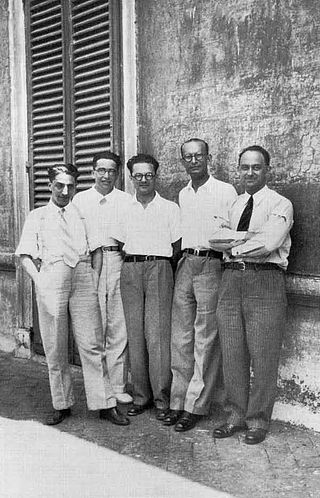
Franco Dino Rasetti was an Italian physicist, paleontologist and botanist. Together with Enrico Fermi, he discovered key processes leading to nuclear fission. Rasetti refused to work on the Manhattan Project on moral grounds.
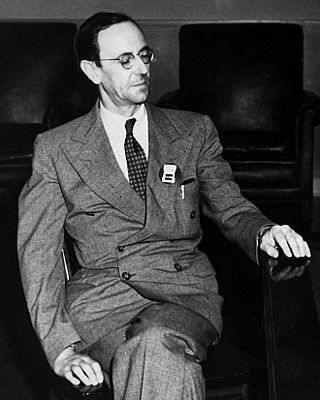
Sir James Chadwick, was an English physicist who was awarded the 1935 Nobel Prize in Physics for his discovery of the neutron in 1932. In 1941, he wrote the final draft of the MAUD Report, which inspired the U.S. government to begin serious atom bomb research efforts. He was the head of the British team that worked on the Manhattan Project during World War II. He was knighted in Britain in 1945 for his achievements in physics.

Bertram Neville Brockhouse, was a Canadian physicist. He was awarded the Nobel Prize in Physics "for pioneering contributions to the development of neutron scattering techniques for studies of condensed matter", in particular "for the development of neutron spectroscopy".
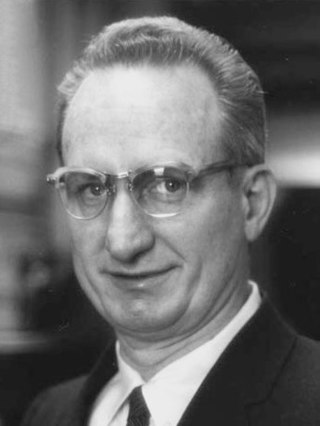
Leo James Rainwater was an American physicist who shared the Nobel Prize in Physics in 1975 for his part in determining the asymmetrical shapes of certain atomic nuclei.
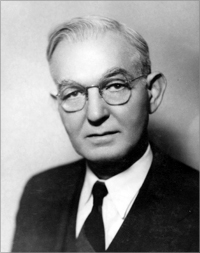
George Braxton Pegram was an American physicist who played a key role in the technical administration of the Manhattan Project. He graduated from Trinity College in 1895, and taught high school before becoming a teaching assistant in physics at Columbia University in 1900. He was to spend the rest of his working life at Columbia, taking his doctorate there in 1903 and becoming a full professor in 1918. His administrative career began as early as 1913 when he became the department's executive officer. By 1918, he was Dean of the Faculty of Applied Sciences but he resigned in 1930 to relaunch his research activities, performing many meticulous measurements on the properties of neutrons with John R. Dunning. He was also chairman of Columbia's physics department from 1913 to 1945.
David J. Helfand is a U.S. astronomer who served as president of Quest University Canada from 2008 to 2015. Prior to his presidency at Quest, he was a Visiting Tutor at Quest. He has also served as chair of the Department of Astronomy at Columbia University and co-director of the Columbia Astrophysics Laboratory. He was also part of the university's Physics Department. His stated research interests include radio surveys, the origin and evolution of neutron stars and supernova remnants, and active galactic nuclei. Helfand has been instrumental in the creation of general education classes oriented around the sciences, developing a course, Frontiers of Science, that has subsequently become part of the Core Curriculum of Columbia College, the university's undergraduate liberal arts and sciences division. He holds a Bachelor of Arts from Amherst College and a Ph.D. from the University of Massachusetts Amherst.
George Michael Volkoff, was a Russian-Canadian physicist and academic who helped, with J. Robert Oppenheimer, predict the existence of neutron stars before they were discovered.

The Montreal Laboratory in Montreal, Quebec, Canada, was established by the National Research Council of Canada during World War II to undertake nuclear research in collaboration with the United Kingdom, and to absorb some of the scientists and work of the Tube Alloys nuclear project in Britain. It became part of the Manhattan Project, and designed and built some of the world's first nuclear reactors.
Eugene Theodore Booth, Jr. was an American nuclear physicist. He was a member of the historic Columbia University team which made the first demonstration of nuclear fission in the United States. During the Manhattan Project, he worked on gaseous diffusion for isotope separation. He was the director of the design, construction, and operation project for the 385-Mev synchrocyclotron at the Nevis Laboratories, the scientific director of the SCALANT Research Center, and dean of graduate studies at Stevens Institute of Technology. Booth was the scientific director of the SCALANT Research Center, in Italy.
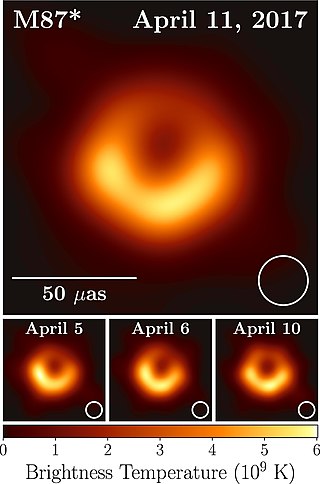
Feryal Özel is a Turkish-American astrophysicist born in Istanbul, Turkey, specializing in the physics of compact objects and high energy astrophysical phenomena. As of 2022, Özel is the Department Chair and a professor at the Georgia Institute of Technology School of Physics in Atlanta. She was previously a professor at the University of Arizona in Tucson, in the Astronomy Department and Steward Observatory.
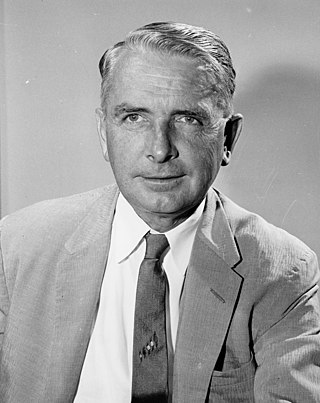
John Harry Williams was a Canadian-American physicist.

David Bowman Nicodemus was a physicist, Physics Professor and Administrator at Oregon State University, and part of the Manhattan Project team.
Malvin Avram Ruderman is an American physicist and astrophysicist.
Anna Louise Watts is a Professor of Astrophysics at the University of Amsterdam. She studies neutron stars and their thermonuclear explosions.
Steven Edward Boggs is an American astrophysicist. He is the dean of the division of physical sciences at University of California, San Diego.
Jocelyn Samantha Read is a Canadian physicist and professor of physics at California State University, Fullerton, known for her research on gravitational waves and neutron stars. She is a member of the LIGO Scientific Collaboration, and is an author of research characterizing the gravitational waves caused by neutron star and black hole collisions, and using the measurements of those waves to provide observational verification of the equations of state of neutron stars.

Barbara Frisken a Canadian physicist who is a professor at the Simon Fraser University. Her research considers soft matter and the realisation of Polymer Electrolyte Membrane Fuel Cells. She is President of the Canadian Association of Physicists.
Jess McIver is an American astronomer. She is an Associate Professor and Tier 2 Canada Research Chair in Gravitational Wave Astrophysics in the Department of Physics and Astronomy at the University of British Columbia. McIver is a member of LIGO, one of the recipients of the Science 2017 Breakthrough of the Year.
References
- ↑ Implications of intense magnetic fields on neutron-star physics. OCLC 833693900 . Retrieved 8 September 2017– via WorldCat.